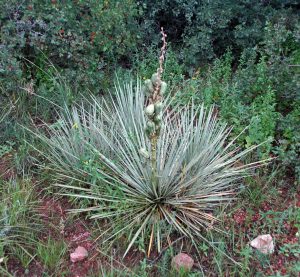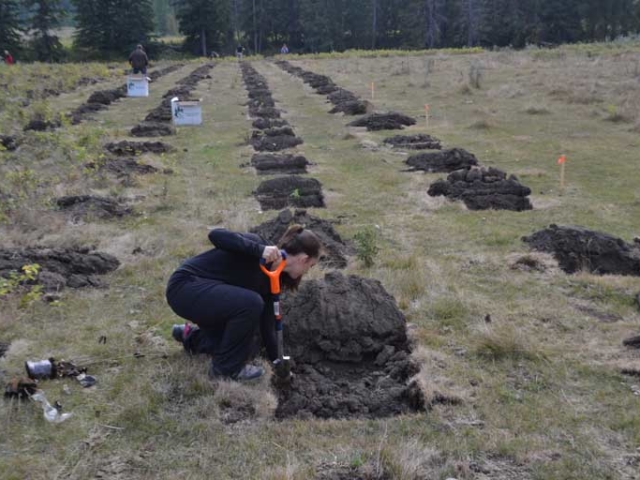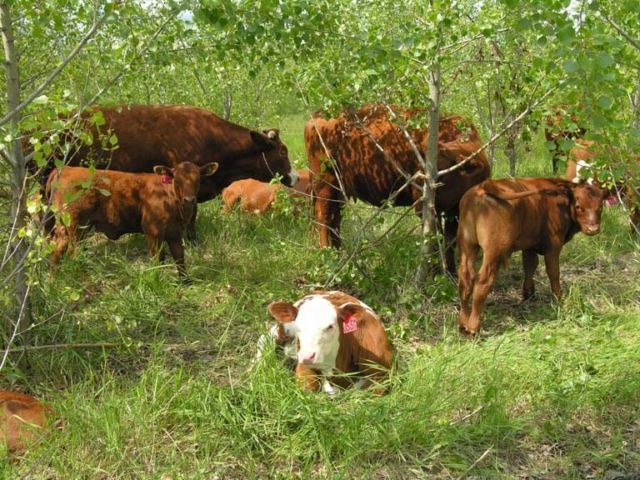Help Clean Up Canada’s Endangered Species List With Some Soapweed, AKA Yucca Glauca
By: Maria Votsis
Ever wonder if you could help increase biodiversity on your own property, maybe even help some plants and insects out? Well this is the post for you! A little double whammy with helping increase populations that are at risk of extinction in Canada.

Yucca glauca (soapweed) plant.
Soapweed, which is also known as Yucca Glauca, is an endangered species that is native to North America. Specifically in Canada this perennial plant can be found in Alberta and Sasachewan. It is naturally growing in two locations. The South East corner of Alberta in the Milk River Basin, and along the Milk River Coulee Slopes in Pinhorn Grazing Reserve, near the Manberries. Better yet, it can be planted in your yard in Edmonton, Alberta!
The best living condition for this plant would be a bright sunny location, with well drained soil, and little to moderate watering. Soapweed is a very low maintenance plant that is very drought tolerant. Perfect for homeowners who do not want to water their plants once a week! However, the leaves are sharp and it’s advised to plant in a spot away from play areas, sidewalks, and driveways. The arrangement of flowers are very beautiful so don’t hide them too far away!

Soapweed flowers in bloom.
These flowers are home to a particular kind of moth that is only attracted to Soapweed flowers. In order for Soapweed to be able to grow and thrive, it has a symbiotic relationship with Yucca Moths. The mutualism between the Soapweed plant and the Yucca Moth is very important in their ability to survive. The only way that Soapweed is able to be pollinated is with the use of these Yucca Moths. Since there is a high risk of losing these plants, it makes it more difficult for Yucca Moths to find food and a place to lay their eggs. This does not include other birds and bats preying on the moths in the meantime.
The bond between Soapweed and Yucca Moths is so strong that their lives depend on each other. This bond is breakable by losing one of the species first. Soapweed needs a pollinator and Yucca Moths need their food source. The lifespan of a Yucca Moth is one year, and the average lifespan of Soapweed is approximately 20 years. Increasing the amount of plants in Alberta will allow for there to be more food sources and space for the Yucca Moths to thrive as well.

Close up of Soapweed flowers before their blossom.
An interesting fact about Yucca Glauca is that the roots contain a very high level of lathering substance called saponins. You can crush the roots and mix with water to make an all-natural shampoo or soap! Hence the common name, Soapweed. An interesting fact about Yucca Moths is that the female moth will rarely lay eggs in a flower that has another batch of eggs inside. This way when the eggs hatch there will be enough food for the caterpillars to thrive off of.
Bridging the gap between locations of Soapweed plants can reduce fragmentation, allowing for Soapweed species to get off the endangered species list. Planting and keeping Soapweed plants alive not only reduces the risk of endangerment, but also benefits the Yucca Moths. Just planting one Soapweed plant in your garden can help in the process of saving the species from endangerment. It is also cool to have rare plants in your garden.
Have you seen Soapweed around town? Click on this link to submit an observation and be a part of citizen science.
References
https://blog.nature.org/science/2013/03/21/the-yucca-and-its-moth/
http://plants.salisburygreenhouse.com/11050015/Plant/512/Small_Soapweed
https://www.alberta.ca/plant-species-at-risk.aspx
https://anpc.ab.ca/?page_id=6261
http://search.millcreeknursery.ca/11050005/Plant/512/Small_Soapweed
https://www.gardeningknowhow.com/ornamental/foliage/yucca/how-to-grow-a-soapweed-yucca.htm
https://www.nwf.org/Educational-Resources/Wildlife-Guide/Invertebrates/Yucca-Moths
https://wordpress.org/openverse/photos/e3592c8b-138b-4d34-8902-561f8b7d9f79
https://wordpress.org/openverse/photos/a276eb27-7c14-431d-b131-014f7bdad99a
https://wordpress.org/openverse/photos/1ade890b-3df6-432a-aa1c-b872b988f5f5
https://wordpress.org/openverse/photos/b136ba04-7664-4f28-be3b-25ade24dfe67







